I'm a professional horticulturalist – these are the 7 ways I have reduced watering in the garden, even in a heatwave, saving me time and resources
Save time and water with these expert water-reducing gardening tips
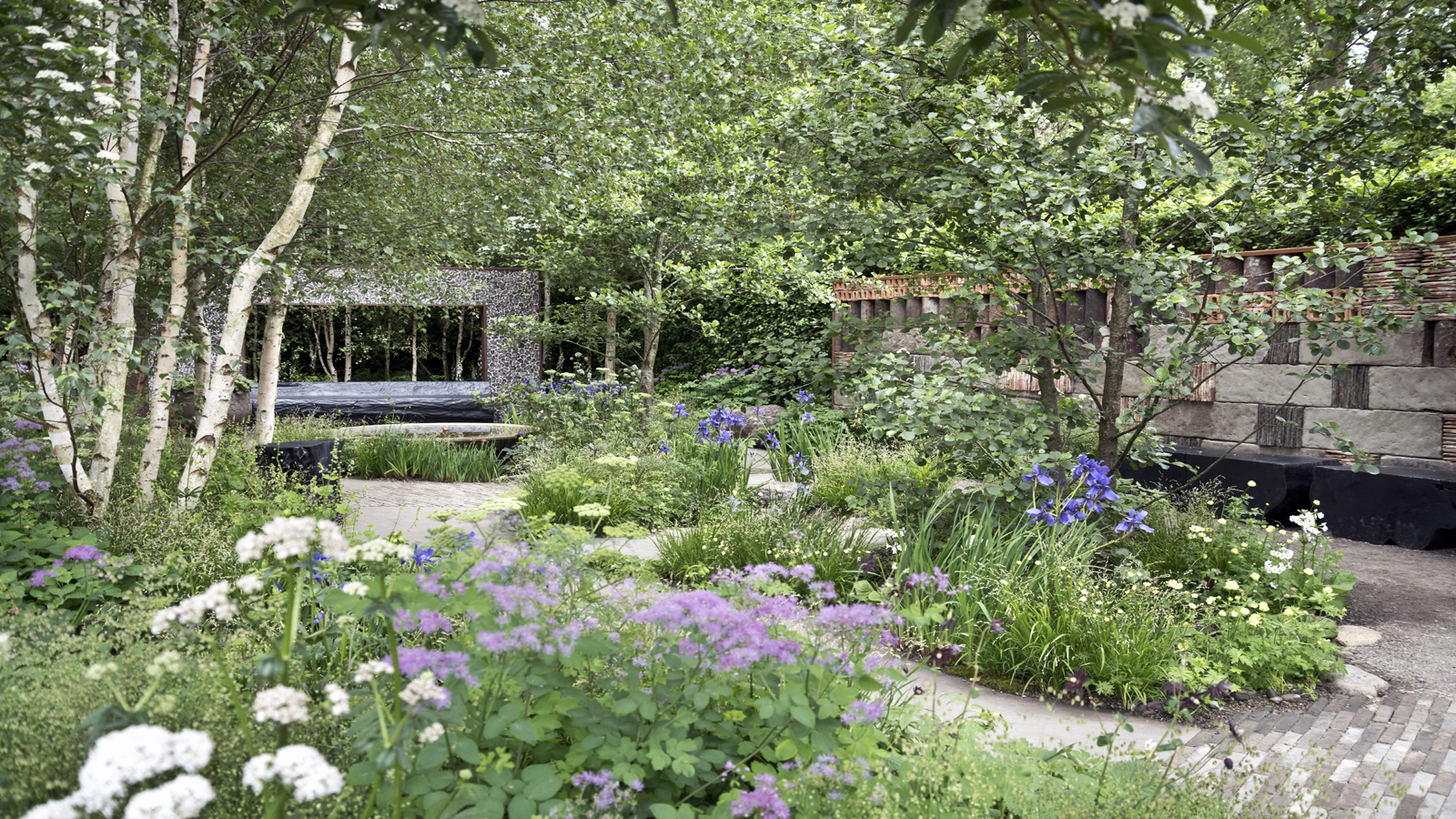

Watering the garden is an essential part of its care and maintenance, especially during heatwaves and the summer months. However, depending on the size of the garden, this task can quickly become a lengthy chore and use up precious water reserves.
Regular irrigation is not only needed during dry spells, but is key for helping young plants establish and ensuring impressive yields come harvest time. I have managed community, commercial and domestic gardens during my time as a professional gardener, and over the years have discovered how to reduce the need to water a garden and conserve this precious resource on both small and large scales.
Learning how and when to water plants correctly is not only vital for keeping them alive, but can also make the difference between whether they thrive or not. From helping lock in soil moisture to drought-tolerant planting, here is how I reduced watering in the gardens I've managed throughout my horticultural career.

How I reduced watering in the garden – an expert's advice
If you would like to reduce the hours you spend watering the garden and learn how to conserve water, my tried-and-tested tips over many years are a great place to start.
Mulch your plants
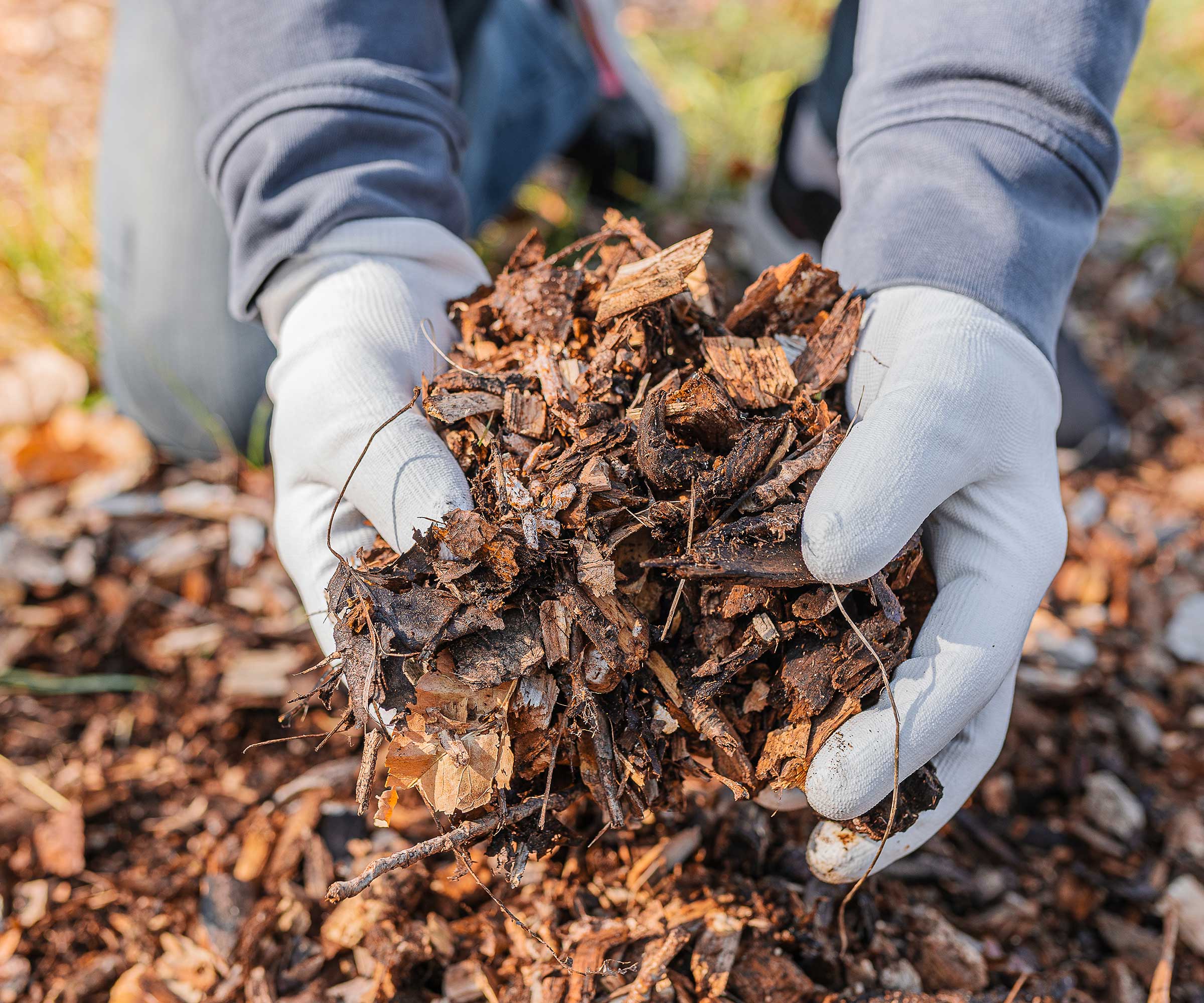
Mulching your garden borders and containers not only helps suppress weeds but can also help improve soil quality and moisture retention.
Biodegradable mulches such as garden compost and leaf mold reduce water evaporation from the soil’s surface and, as they break down, improve soil structure and feed the soil.
To prove effective, a thick layer is needed, two to three inches thick. However, it is advisable to leave a small space around any plants, as any mulch in contact with the stems can lead to them rotting.
Design expertise in your inbox – from inspiring decorating ideas and beautiful celebrity homes to practical gardening advice and shopping round-ups.
Having gardened in the past on a light and sandy soil, I know only too well that a free-draining soil requires much more frequent watering than perhaps a heavy clay-based soil. If your garden is free-draining, all is not lost, as a light soil is preferable for many Mediterranean plants that require less frequent irrigation.
However, if you are keen to improve your soil's water-retaining properties, you can incorporate plenty of organic matter, which will help the soil hold on to any moisture rather than drain away or evaporate.
Adopt the 'right plant, right place' mantra
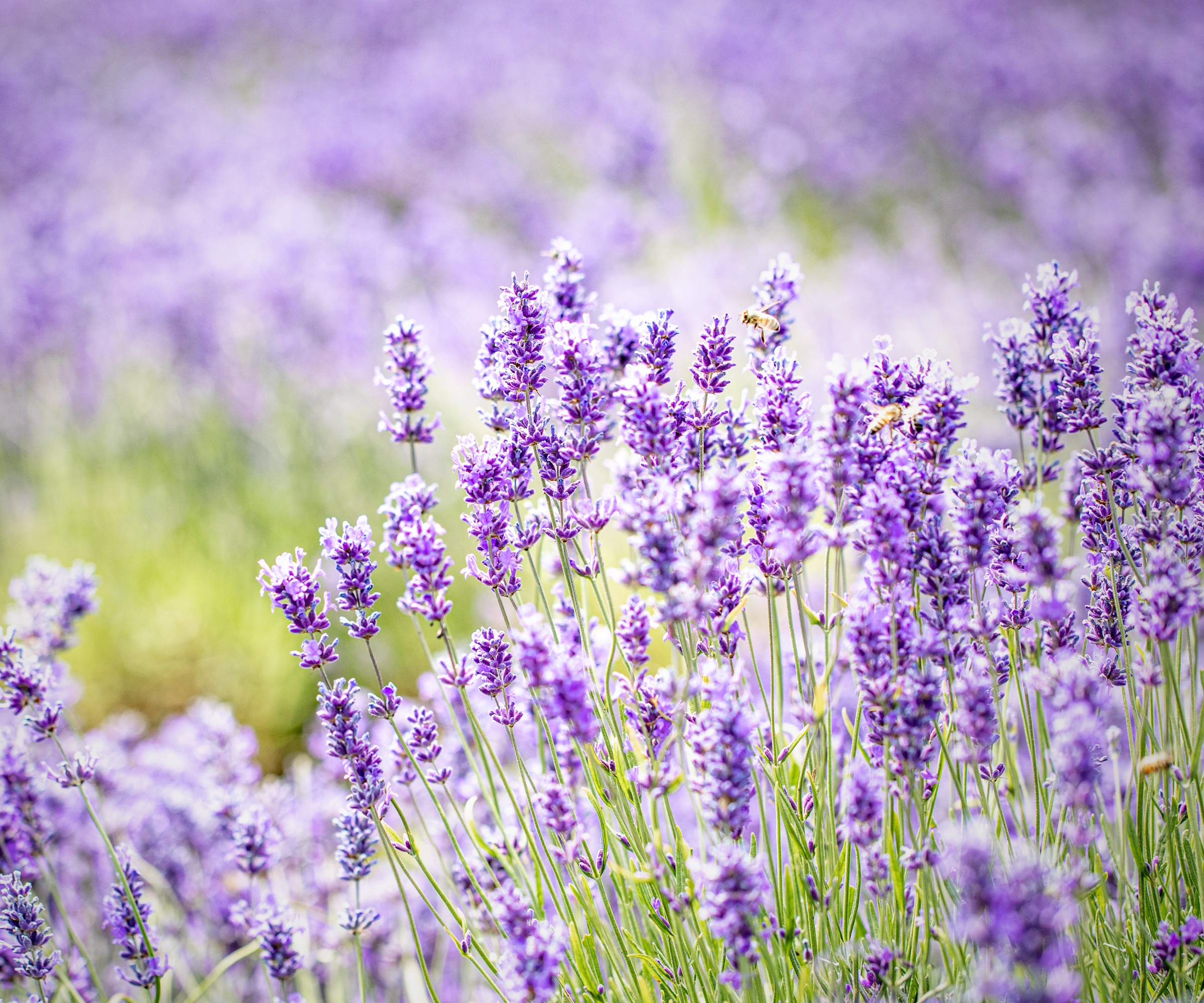
The term ‘right plant, right place’ was popularized by the gardener Beth Chatto in the 1960s and highlights the importance of considering a plant’s ideal growing conditions.
Over the years, I have inherited a number of plants growing in the wrong place and conditions that were subsequently struggling. By digging up and moving them to a more suitable spot, they were not only happier and looked better, but also needed less ongoing care.
With our climate seemingly changing more rapidly than we would like, gardeners are planning ahead and climate-resilient planting is trending just in time. For example, by planting only sun-loving or drought-tolerant plants in a south-facing or hot border, you will not only give the plants the growing conditions they need, but also reduce the need to water them once established.
Make the most of containers
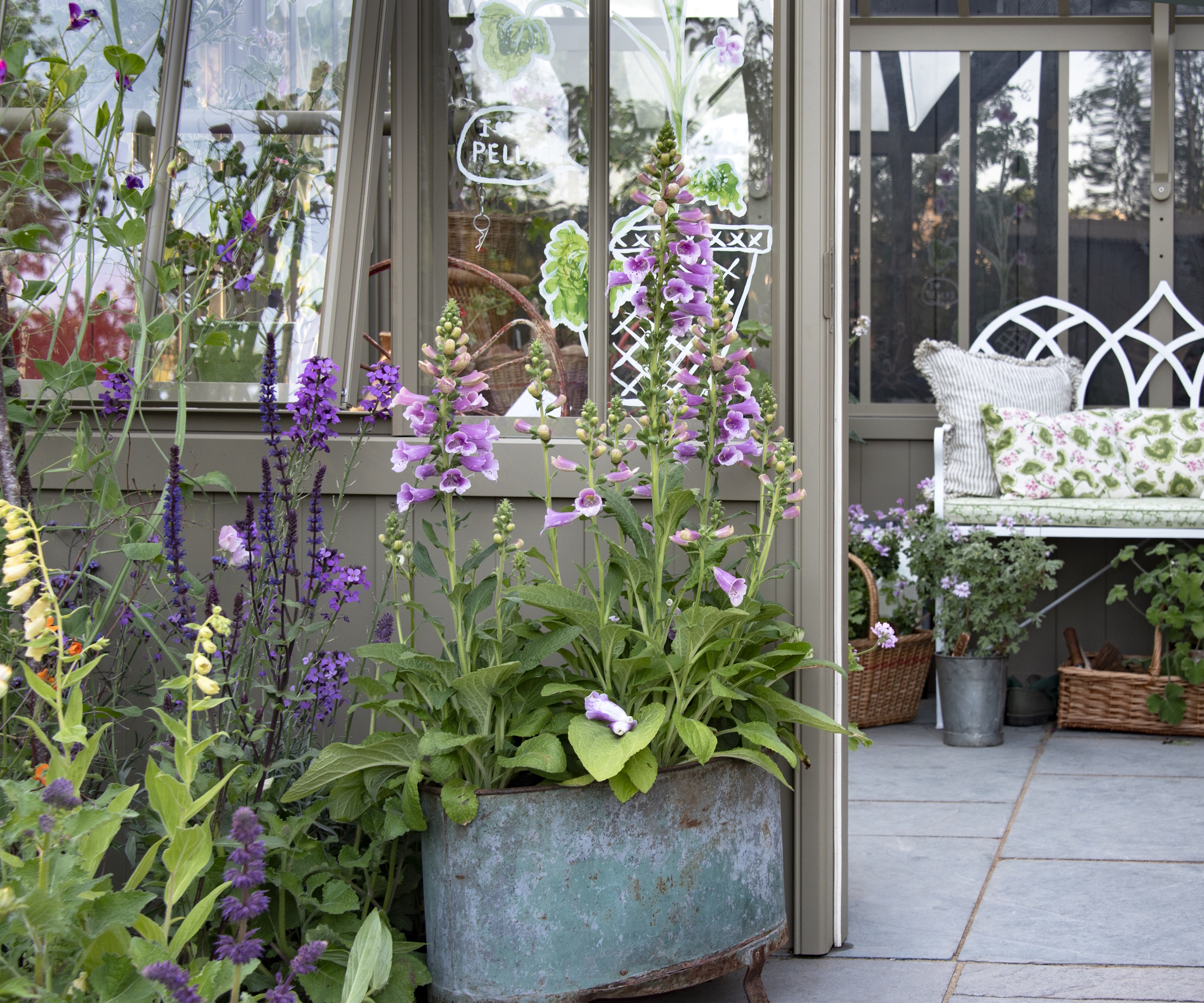
Container gardening can provide a stunning visual display and is a great way to grow plants when space is limited. However, container plants tend to require more frequent watering than when grown directly in a border.
This is due to the limited amount of moisture the pot’s soil can contain at any one time. This is especially true for small pots and containers that, no matter how often you may try and water them, keep drying out on a hot summer's day.
Thinking back to how I reduced watering in the gardens I have worked in, growing several plants in a large container rather than individually in smaller pots certainly made a difference.
Grouping pots together can also help reduce the need for watering, as they can provide shade for each other and raise the humidity levels in their vicinity.
For a permanent pot display, you can also use a drip-emitting irrigation system designed for troughs and planters that is connected to an outdoor spigot. These systems, such as this Raindrip automatic drip irrigation watering kit from Amazon, are adaptable and can be cut to length so you can make them suit your own container arrangement.
For containers in hard-to-reach places, such as hanging baskets or for those pots that tend to get neglected, water-storing crystals such as these Miracle-Gro water storing crystals from Amazon can be beneficial.
Swelling when they come into contact with water, the granules or gel crystals slowly release their moisture back into the soil when needed.
Install an irrigation system
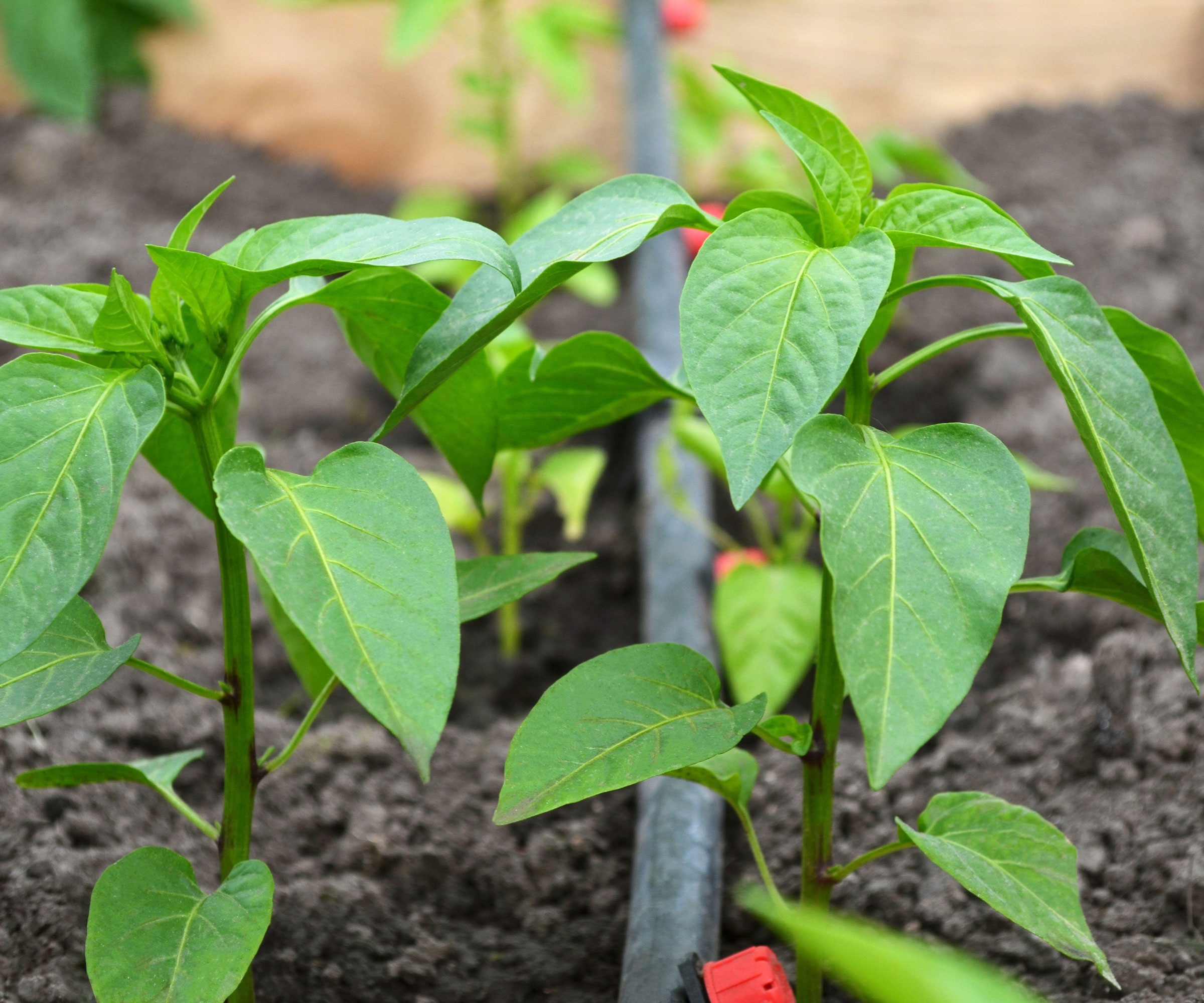
From my experience managing large gardens, irrigation systems are a win-win for both the environment and one’s time. Irrigation systems commonly available include drip line and soaker hose options.
Choosing between a drip irrigation system and a soaker hose can be a complex process with pros and cons for both options. However, they both essentially deliver water slowly to where it is needed most, the base of a plant and its roots. Reducing not only mildew risks but also soil run off.
When used with a timer, an irrigation system can also be set to turn on only when it is needed and when evaporation is least likely, further conserving this precious resource.
Suitable for newly laid hedging, borders and vegetable patches, irrigation systems can also be highly beneficial when installed in a greenhouse or poly tunnel. In the height of the summer, daily, if not twice-daily, watering is often needed for plants grown under cover.
Apart from regular checks to ensure everything is working as it should, an irrigation system will not only save you time on a daily basis, but also keep everything going should you go away for a few days.
Irrigation systems, especially those for larger gardens, can become complex and expensive. However, on a smaller scale, DIY gardening watering systems and DIY drip irrigation solutions can prove a viable alternative.
Where mains electricity is not available to run a powered irrigation system, solar-powered devices can be used instead.
I have found systems such as this Gardena solar-powered irrigation set available from Amazon a brilliant alternative for greenhouses and vegetable patches set a long way from the house and any power source.
Harvest your rainwater

With water such a precious resource, rainwater harvesting is both an ecological and prudent solution. From rain barrels and water butts to extensive house hold gray water systems, there are many ways to harvest rainwater to use on your garden.
As with irrigation systems, rainwater harvesting does not necessarily need to be complex or expensive.
A recycled plastic barrel linked to a drain pipe can prove just as effective at collecting water as something purpose-built. That being said, you may want to choose a vessel that will enhance your garden aesthetics, such as this 50-Gallon rain barrel from Amazon.
From experience, having multiple water-collecting vessels dotted around the garden near where they are needed most will not only save you from using the hose but your arm muscles as well.
Watering at the right time of day
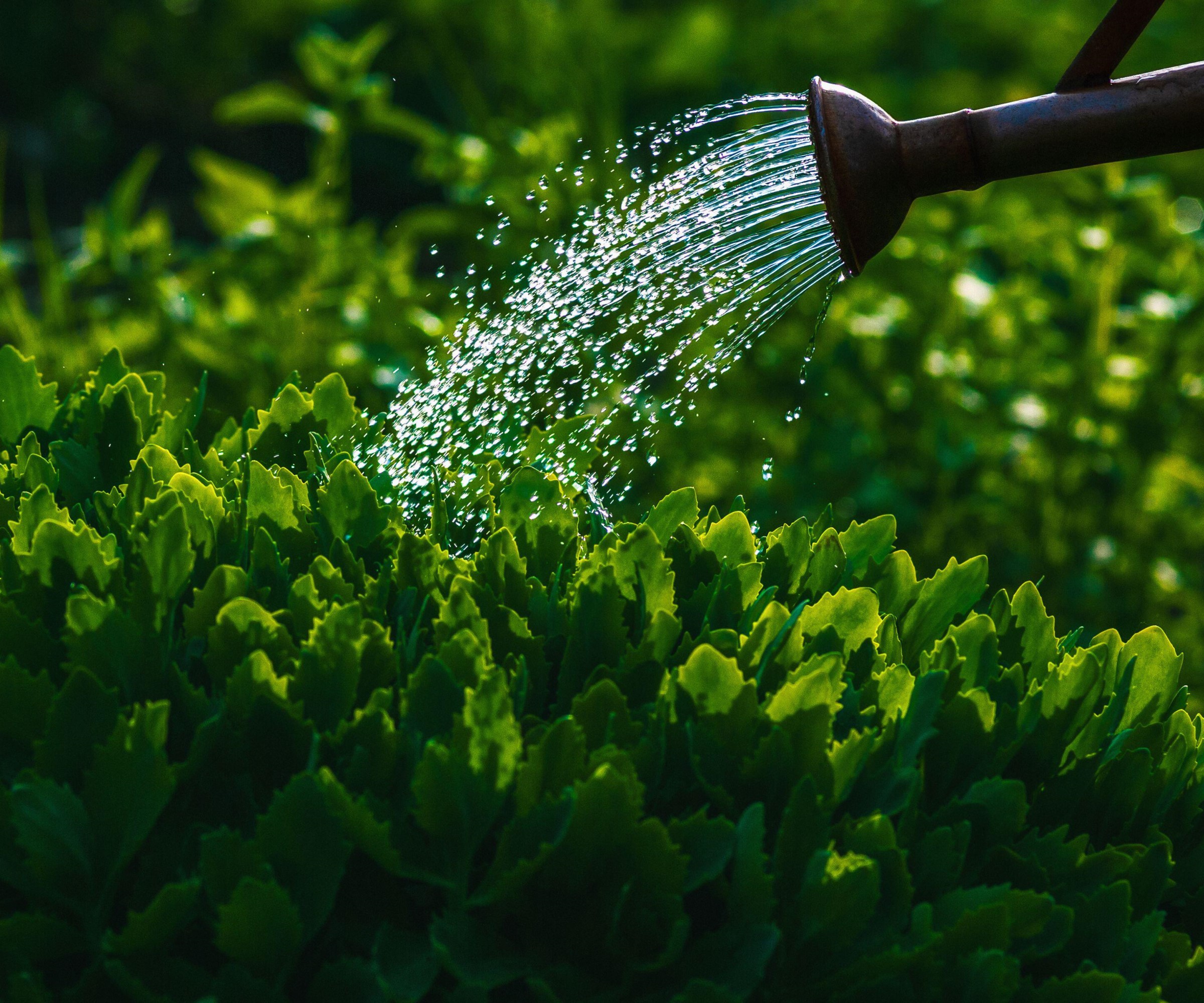
Watering the garden early in the morning before the day has started to warm up is another way to reduce the need for irrigating. By irrigating in the cool of the day, you will be watering most efficiently, as any evaporation, if any, will be minimal and you will be providing moisture for the plants to use when they are transpiring most during the day.
Furthermore, through watering in the early morning rather than early evening, you are potentially discouraging slugs and snails from being drawn towards your plants and fungal diseases from developing on wet foliage overnight.
If schedules and school drop-offs do not allow for early morning watering, investing in a timer such as this Orbit 58910 hose faucet timer from Amazon will reassure you that your plants are being watered whilst you carry on with your day.
Water when the plants need it
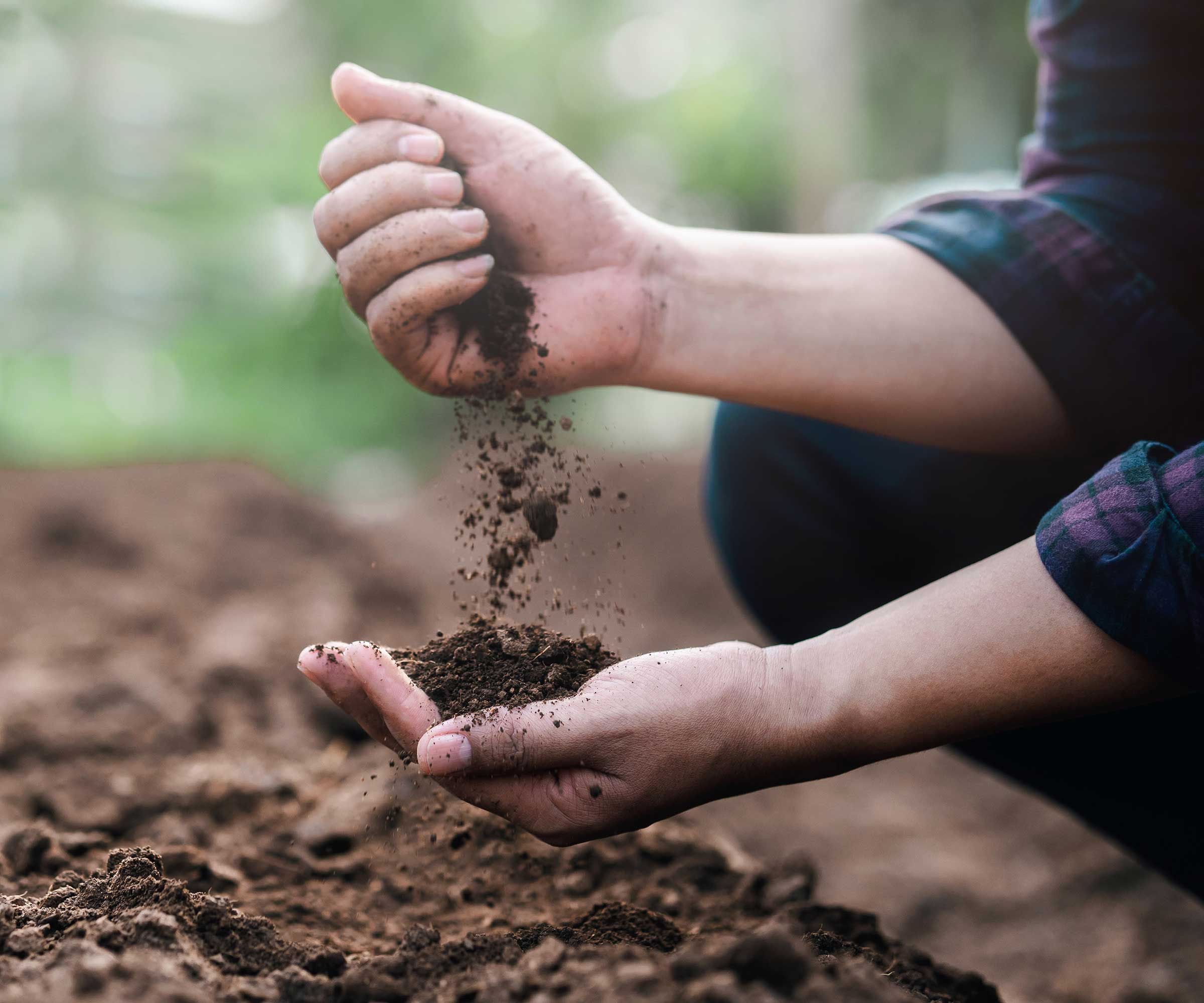
It may seem obvious, but keeping an eye on the weather forecast will also help reduce the need to water the garden. Watering for hours, especially by hand, only to be followed by a downpour, can be particularly disheartening.
Most areas will need supplementary irrigation over the growing season, but your US hardiness zone and upcoming forecast will roughly indicate by how much.
Checking the soil will also give you an indication of whether watering is necessary. The soil may look dry from above, but on inspection, the soil a couple of inches below the surface can still be damp.
If the soil is still moist, there is no need to water. In fact, watering onto already saturated soil may lead to the plants being over-watered and root rot setting in.
With climate change and rising temperatures, gardeners are looking for further ways to reduce their ecological impact from their own backyard.
Along with the water-saving measures mentioned above, planting a tree can also help make a difference. Our guide to the best trees for climate change highlights a range of trees that will not only look great, but also help our planet as well.
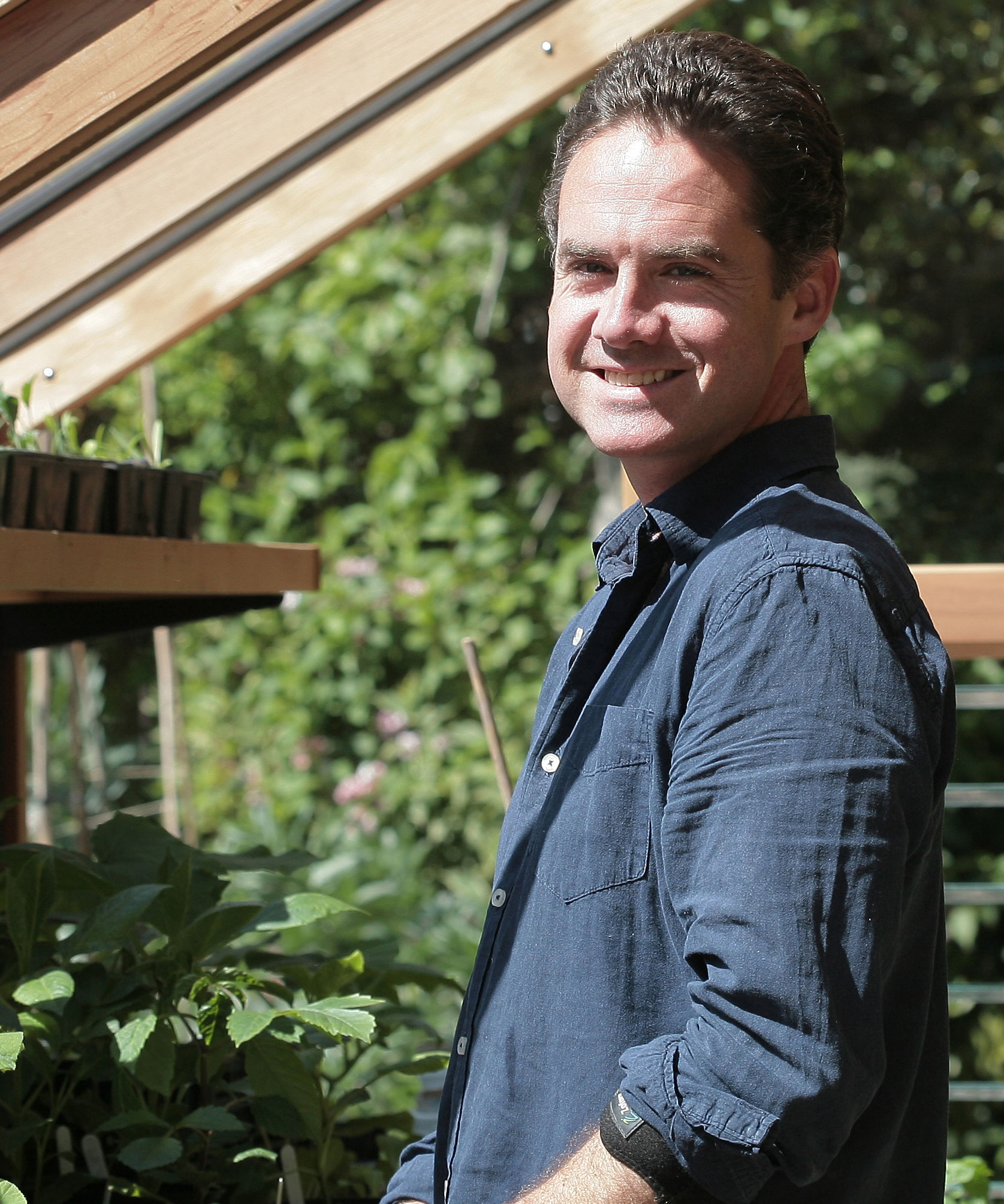
Edward Bowring is a horticultural therapist and writer with a passion for gardening and the health benefits that it has to offer. With a background in occupational therapy, Edward worked within health care settings where he witnessed first-hand the healing power of gardening and has managed and run therapeutic kitchen and community gardens ever since.
You must confirm your public display name before commenting
Please logout and then login again, you will then be prompted to enter your display name.